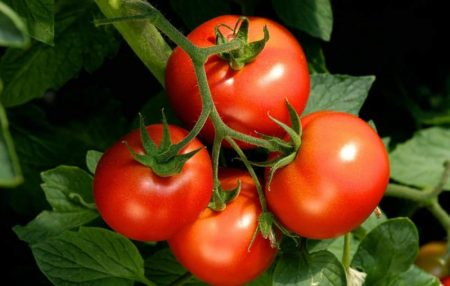
Stack tomatoes, which include the brand Be healthy, are popular among gardeners. They require minimal maintenance, are unpretentious, grow well in open ground.
Content
Grade description
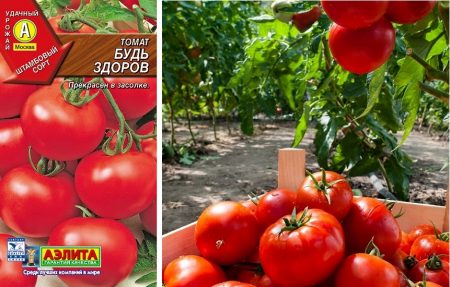
The originator of this tomato variety is the Aelita agricultural firm. Tomato Be healthy - medium early, suitable for cultivation in all regions of Russia. In height, it reaches only 30-45 cm, refers to low-growing varieties.
Thanks to simple agricultural technology, this variety is recommended for beginners to grow, although experienced gardeners are also willing to plant it. This tomato does not need the formation of a bush, the removal of stepsons, and this greatly simplifies the care of the plant.
Ripening dates are up to 110-115 days, the fruits can be removed in a state of technical ripeness and ripened at home.
The bush is strong, medium leaf. During the fruiting period, a garter of the hands may be required so that the branches do not break under gusts of wind. Variety Be healthy is usually grown on beds, it is also suitable for tunnels, greenhouses (like the second tier).
Fruit characterization
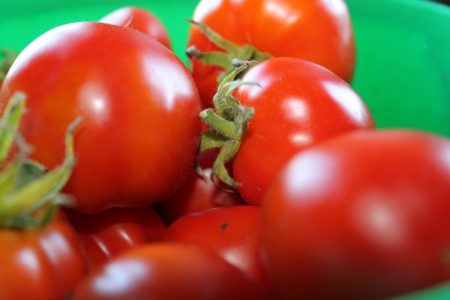
In standard varieties of such a type as tomato Be healthy, fruiting is usually friendly. Tomatoes are aligned, rounded, with smooth beautiful skin. The mass of each fruit is up to 80-90 grams, 5-6 tomatoes are tied in the hands.
The pulp is dense, tasty. A little seed. It is used fresh, many also note that the fruits of this variety of tomatoes are very tasty in pickling and preservation.
By their size, the fruits are also suitable for whole-canning. In the blanks they do not lose their shape, do not crack, and retain a pleasant taste.
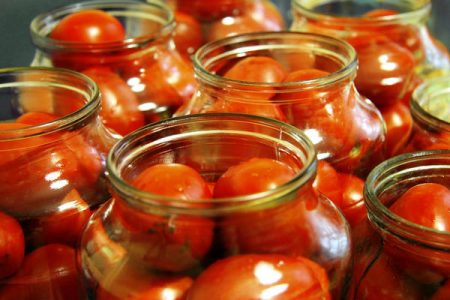
Reviews about growing tomato Be healthy
Galina, Mozhaysk
I am a beginner gardener, so pick up tomato varieties easier. Among his favorites - Moskvich, Generosity, bless you. They grow in my OG, I cover only the first time with a film, then I remove it. I usually land in the second half of May, but I also look at the weather.
A good harvest, in the warm summer many blush on the bushes. But basically, I shoot tomatoes green, and they are already ripening at home. Variety Be healthy fresh do not eat, as they ripen, I put them all in the rolls. Tasty assorted cucumbers, and so do it - in the marinade.
Eugene, St. Petersburg
Variety Be healthy grown the first year. He didn’t blush on the bush, but it’s not only him, many of them don’t blush. Still, the climate of my region affects, and the weather. The taste is saturated with such a tomato. I haven’t tried it in pickling, but in the marinade this tomato is probably the tastiest. The tomato is firm, tasty and sour in consistency.
It’s resistant to diseases, I had late blight on the beds, this variety was hooked a bit, but, in general, it pleased me.
Advantages and disadvantages of the variety
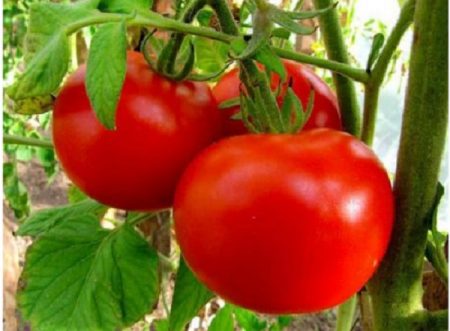
Standard tomatoes are unpretentious, and this is one of their main advantages. It should also be noted:
- optimal ripening dates (the variety is suitable for regions of risky farming);
- friendly return of fruits;
- excellent taste;
- suitability for salting, fresh consumption;
- the opportunity to do without the formation of a bush, pinching.
The lateral shoots of such tomatoes appear late, while their development is very slow, they do not take nutrients. Unlike indices, hybrids, stepchildren, these varieties do not need to be removed, which simplifies care and saves time. The Be healthy variety is sufficiently resistant to most diseases, and during phytophthora it is not afraid of it.Also, judging by the reviews, the tomato performs well under adverse weather conditions, does not shed ovaries, and productivity does not decrease.
For beginner gardeners, such varieties as tomato Be healthy - a real find! They perfectly take root, tolerate the transplant well, while the seedlings do not stretch, they are strong and healthy. It is also convenient that you can collect your seeds from them, while with hybrids this does not work.
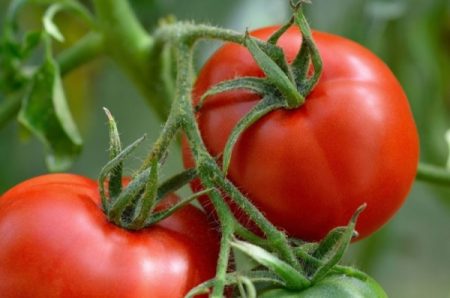
Due to its compactness, the tomato Be healthy can be planted in compacted plantings, thereby significantly saving space on beds. Where on 1 square. 2-3 tall tall plants are planted per meter; 7-8 pieces of such bushes can be planted.
Disadvantages:
- low weight of tomatoes (a characteristic feature of most standard varieties);
- inherent for such varieties of acidity;
- Compared with tall tomatoes, the productivity of the standard grade Be healthy will be lower, but after all, caring for it will be much easier.
Recommendations for growing tomato varieties Be healthy
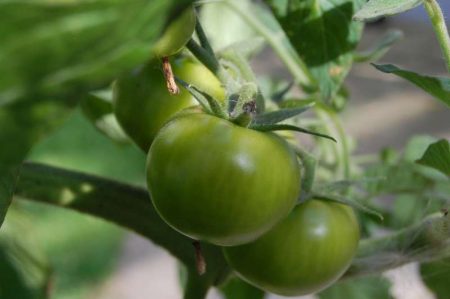
To get a good harvest, from autumn on, you need to choose a good sunny place for tomatoes, dig your breast and make the necessary fertilizers. It is advisable to observe crop rotation and not to plant tomatoes after eggplant, sweet pepper or potatoes. If before that cucumbers, onions or carrots grew on the bed, then boldly prepare this row for tomatoes.
It is important to know the level of acidity of the soil, since tomatoes most like soil of neutral acidity (pH 6.0-7.0). If the indicator is higher, sulfur or peat is added, lime or dolomite flour are suitable for lowering acidity (which is usually what gardeners require).
In the fall, you can add to the ground:
- rotted manure;
- peat;
- compost;
- bird droppings;
- potassium salt;
- superphosphate.
In spring, you can make wood ash, ammonium sulfate. The ridges are located from north to south, so the plants will be evenly lit by the sun.
Growing seedlings
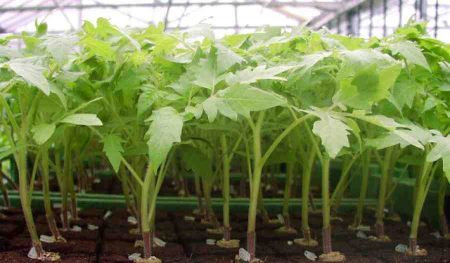
Seeds are sown in the middle or end of March, so that the seedlings at the time of planting it in a permanent place was about 55 days old. Be sure to withstand tomato seeds in potassium permanganate (about 15-20 minutes), washed, germinated.
If necessary, soaking in growth stimulants is used to improve germination, while everything is done strictly according to the instructions. It is important to maintain a stable temperature for tomatoes: + 23ºC ... + 25ºC - during the day, + 18ºC ... + 20ºC - at night.
Dive is carried out when the seedlings will have two real leaves. Tomatoes are fed only after a dive, after about 10-12 days, using complex fertilizers.
For 10-14 days, you can begin to harden the plants, exposing them to fresh air. Suitable balcony, porch, loggia. Hardening starts from 15-20 minutes, gradually increasing the time to several hours.
Landing is carried out only when stable heat occurs. In many regions, this period is the middle or end of March (middle band), in the northern regions, as well as in Siberia, in the Urals, tomatoes can be planted in open ground not earlier than early June.
The soil should warm up to + 14ºC, and better to + 16ºC. It is good to plant such a variety on beds under arcs, covered with a film or non-woven material.
Outdoor Care
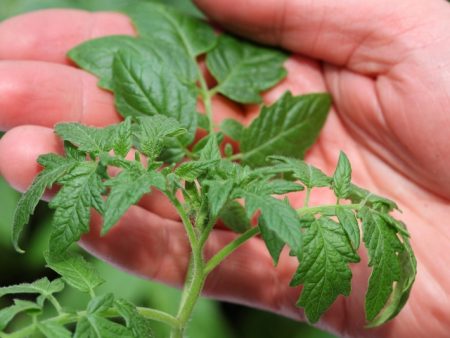
Variety Be healthy planted tightly, up to 7-9 plants per square meter. Immediately recommended to put the stakes (on the north side), so that later, during the ripening period of the fruit, tie up heavy hands.
After planting tomatoes in the holes, the ground can be mulched. The mulch layer should be about 8-10 cm, materials such as sawdust, straw, mowed grass, humus are suitable.
For about 10-12 days, the tomatoes are left alone, excluding watering and top dressing. This is the time of adaptation of plants to a new place, growth and formation of the root system. After 10 days, the tomatoes are watered, and it is also possible to carry out the earthing up accurately.
This variety does not need to pinch and form a bush, but fertilizing the tomato is necessary.
First feeding (approximately 16-18 days after planting): diluted mullein or bird droppings (1:10 and 1:20).
The second and subsequent feeding is carried out with an interval from the previous one in 10-12 days, monitoring the condition of the plants. It is advisable to combine the "lunch" of tomatoes with watering. For tomatoes, during the flowering period, phosphorus is added, during the fruiting period - organic matter, ash, potash fertilizers.
Excellent fertilizers - fermented grass (usually use nettles, dandelions), as well as infusions of wood ash. From folk remedies, it is recommended to use powder from dried peel of bananas for feeding tomatoes. This mixture contains a large amount of phosphorus and calcium, which are necessary for tomatoes during fruiting. The powder is embedded in the soil near the plant.
In total, tomatoes are fed 4-5 times per season. At the same time, they compulsorily comply with the norms for making any formulations and fertilizers.
Tomatoes are watered rarely, abundantly, taking into account weather conditions. Usually enough watering once a week (provided that there is rainfall), in a dry summer - 2-3 times a week, well moistening the soil.
The water should be warm, + 22ºC, be sure to stand. Even if you take water from a well, a well, water is first collected in barrels, allowed to stand, heated under the sun, and only then irrigated. Do not allow moisture to get on the leaves, as tomatoes can get sick from this. In rainy summer, you need to inspect the plants every time, removing the yellow, blackened leaves.
As a prophylaxis against diseases, spraying with Bordeaux liquid, infusion of garlic, onion husks, and also whey diluted in water is used.
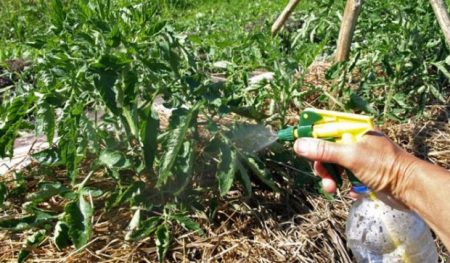
Tomato is a self-pollinated crop, so there are usually no problems with pollination. But at high humidity, as well as at high temperatures (above + 30ºC), the process can be disrupted. Therefore, during the flowering period, in the morning (at about 10-11 hours) they help pollination of tomatoes, slightly shaking the plants.
The fruits are harvested in a state of technical maturity (in the Be healthy variety, the fruits become light green). Then the tomatoes are placed on the maturation of the house in baskets, boxes.




 Low-growing tomatoes, without pinching: 5 of the most delicious varieties
Low-growing tomatoes, without pinching: 5 of the most delicious varieties Why tomato seedlings grow poorly
Why tomato seedlings grow poorly We grow a tomato in a shell
We grow a tomato in a shell Growing tomatoes without watering according to the method of Kazarin
Growing tomatoes without watering according to the method of Kazarin